|
|
 subscribe
subscribe
|
 subscribe subscribe
|
In Memoriam: Crew of Space Shuttle Challenger (1986) Mission 51-L
On 28 January 1986, seventy-three seconds after their lift-off from the Kennedy Space Center (Florida), the solid fuel payload powering the ascent exploded, hurling the passenger cabin into the ocean. Because it was reported (by Investigator Joseph P. Kerwin to Rear Admiral Richard H. Truly, Associate Administrator for Space Flight, National Aeronautics and Space Administration (NASA)) that "the forces on the Orbiter at breakup were probably too low to cause death or serious injury to the crew... medical analysis indicates that these accelerations are survivable, and that the probability of major injury to crew members is low" the death of the crew is shrouded in uncertainty, as nobody knows how much they experienced of their impending demise (which certainly happened when they hit the water, resulting in over 200 Gs of deacceleration). Investigators expressed the opinion that unconsciousness happened a few seconds after the accident. Recording devices stopped at the moment of the explosion, when electrical circuits failed.
Killed were mission commander Francis R. Scobee; pilot Michael J. Smith; mission specialists Ronald E. McNair, Ellison S. Onizuka, and Judith A. Resnik; and payload specialists Gregory B. Jarvis, and Christa McAuliffe, a high school teacher from New Hampshire.
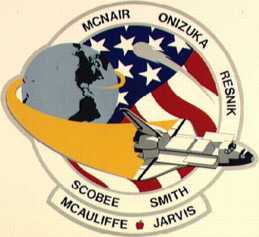
We will never forget them nor the last time we saw them this morning as they prepared for their journey and waved goodbye and 'slipped the surly bonds of earth to touch the face of God.'
-- President Ronald Reagan, in a moving broadcast to the nation that afternoon, paraphrasing High Flight, written by 19-year-old American airman John Gillespie Magee, Jr., in 1941 in England, while serving with the Royal Canadian Air Force, shortly before his death.
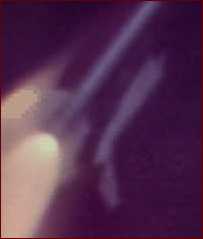 |
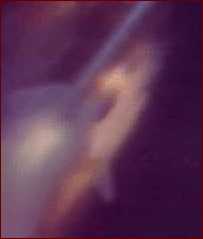 |
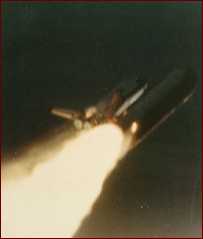 |
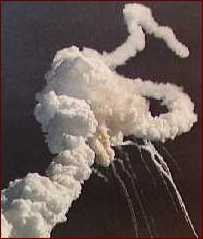 |
Following the incident, President Ronald Reagan appointed a special commission to uncover the cause of the accident. The commission was headed by former secretary of state William Rogers and included former astronaut Neil Armstrong, former test pilot Chuck Yeager, and scientist Richard Feynman.
The commission found fault with a failed sealant ring and with the officials at the NASA who allowed the launch to take place despite concerns voiced by NASA engineers.
The failure of an O-ring seal of a joint on one of the solid rocket boosters (SRBs) was the primary cause of the Challenger loss. SRBs are constructed in four cylindrical sections that must be sealed together completely to prevent the escape of the intensely hot by-products of the burning fuel during launch. O-rings are rubber rings that play a crucial part in ensuring the seal. The cold weather on the launch day made the rubber of an O-ring on the joint between the bottom two segments of the right SRB brittle, which, combined with the faulty design of the joint, allowed hot gases from the burning solid rocket fuel to escape. The gases and flames burned through the metal holding the rocket in position. When the rocket broke loose, it ruptured the side of the external fuel tank, allowing the liquid hydrogen and oxygen to mix prematurely and explode.
The shuttle launch program was halted during the commission's investigation and was not resumed until shuttle designers made several technical modifications and NASA management implemented stricter regulations regarding quality control and safety. Shuttle missions resumed on September 28, 1988, with the flight of the shuttle Discovery.
Where were you when you heard that Challenger blew up?
For those of us too young to remember where we were when President John F. Kennedy was assassinated (I, for example, was in the womb), the Challenger disaster was a significant milestone. I was in the Prudential Center Station post office, in downtown Boston. I had just picked up some mail when I overheard the program being played at the post office: "...and then the spaceship blew up...." I was momentarily confused, because I didn't think the post office would allow science fiction during working hours, and the space shuttle launches had become so successful and routine that I wasn't sure we had astronauts on a mission. I reassured myself that if it really had been the space shuttle the tone would have been different, and I continued on my way. Later that evening I happened upon the news and found out what had happened.
The Crew
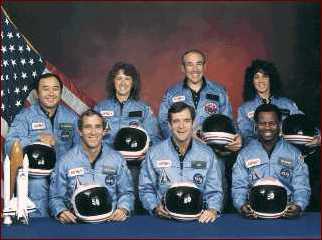 This is the official portrait of the STS 51-L crewmembers.
This is the official portrait of the STS 51-L crewmembers.
In the back row (left to right) are Mission specialist Ellison S. Onizuka, Teacher in Space Participant Sharon Christa McAuliffe, Payload Specialist Greg Jarvis and Mission specialist Judy Resnik.
In the front row are Pilot Mike Smith, Commander Dick Scobee, and Mission specialist Ron McNair.
Here are more details about the crew, who appear in alphabetical order:
Jarvis, Gregory B. (1944-1986), satellite design expert.
McAuliffe, Sharon Christa Corrigan (1948-1986), teacher.
McNair, Ronald Erwin (1950-1986), physicist.
Onizuka, Ellison S. (1946-1986), aerospace engineer and test pilot. Onizuka was the first Japanese American and the first person from Hawaii to go into space. In 1985 he flew aboard the space shuttle Discovery on a classified military mission.
Resnik, Judith Arlene (1949-1986), electrical engineer, who in 1984 became the second American woman (after astronaut Sally Ride) to fly in space.
Scobee, Francis Richard (1939-1986), pilot. An experienced jet pilot and veteran of one successful space shuttle mission, Scobee was the mission commander.
Smith, Michael J. (1945-1986), United States astronaut and pilot. An experienced aircraft pilot, Smith was on his first flight to space.
| Have you found errors nontrivial or marginal, factual, analytical and illogical, arithmetical, temporal, or even typographical? Please let me know; drop me email. Thanks! |